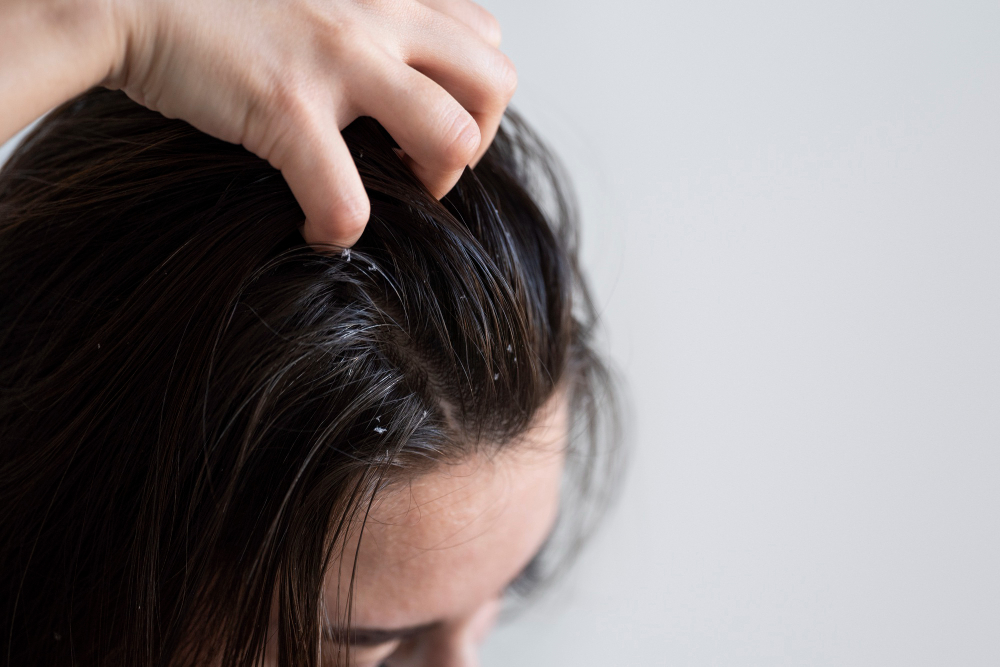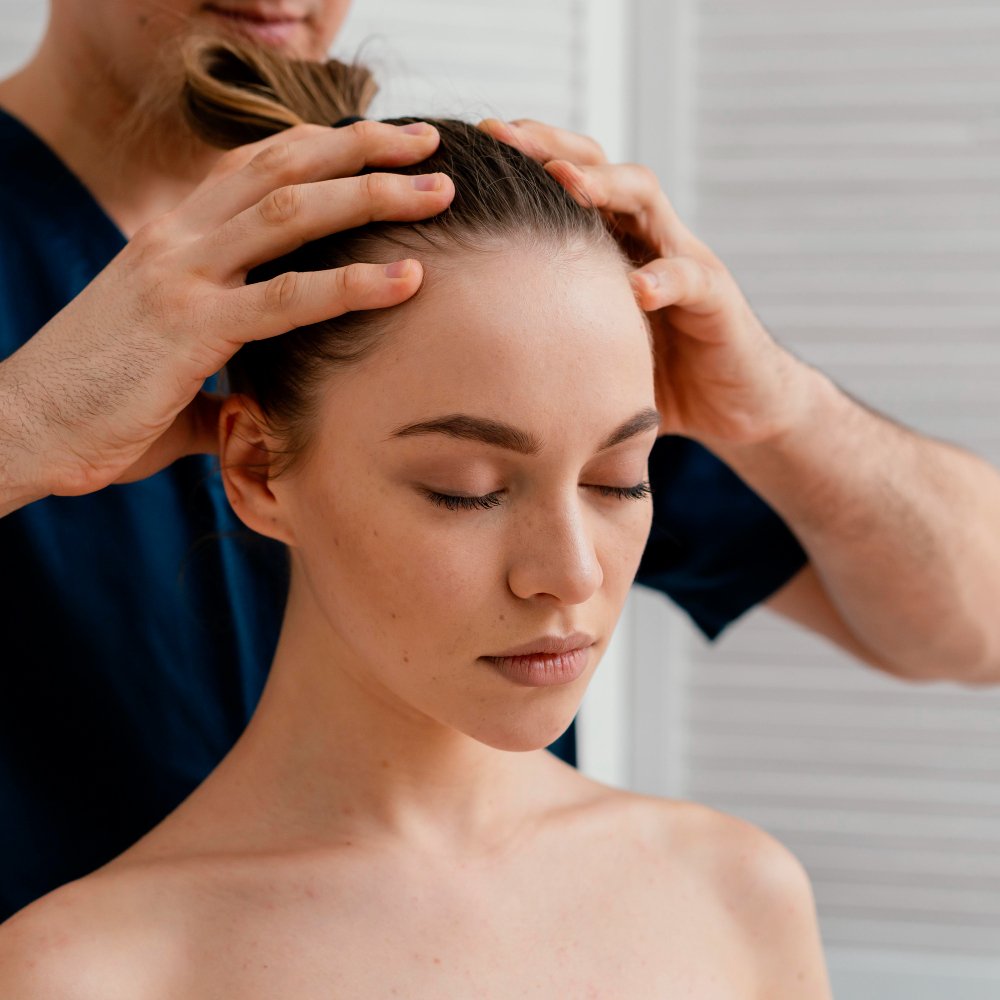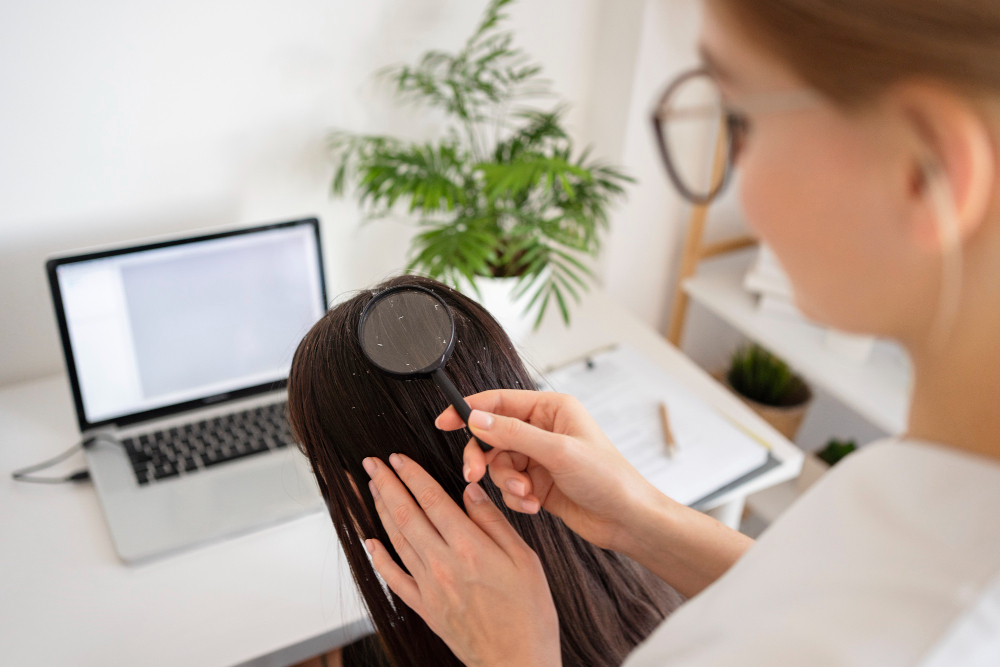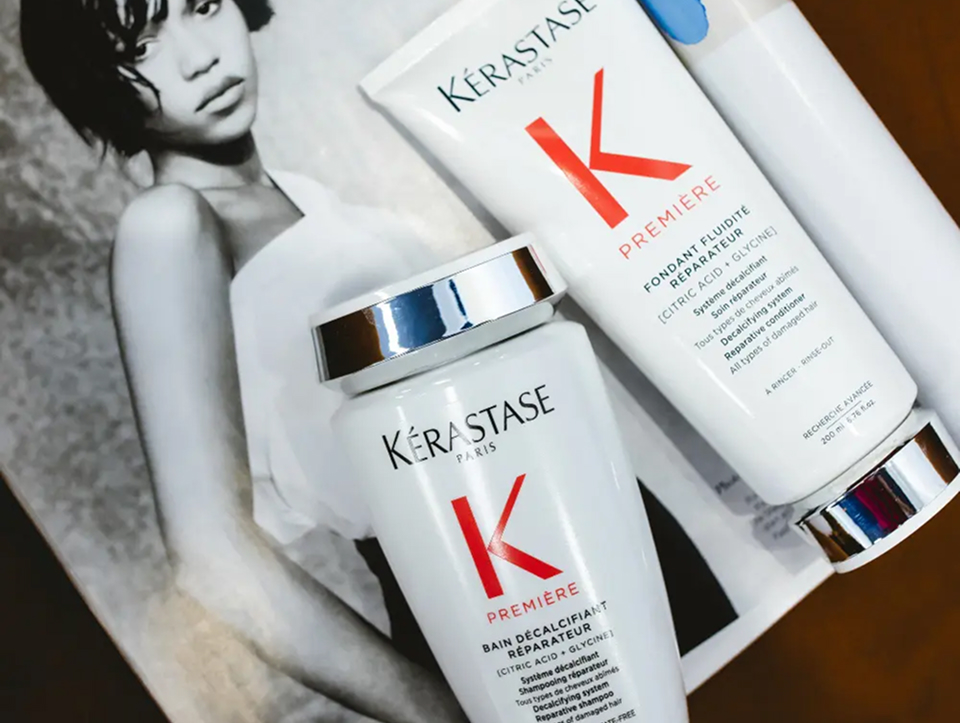If you’ve ever wondered how often should you get a scalp treatment, you’re not alone. Many people feel unsure about the proper schedule — too little, and buildup takes over; too much, and you risk irritation.
The good news? You can follow a simple, customized timeline based on your scalp type, lifestyle, and hair goals.
In this guide, you’ll learn the ideal scalp-treatment frequency for every scalp condition, how to tell when you need one sooner, expert-approved routines, and whether salon or at-home care is right for you.
Whether you’re dealing with dryness, itchiness, oiliness, flakes, or want healthier hair from the root up, this guide will help you follow a routine that actually works for your scalp.
Most People Need a Scalp Treatment Every 2–4 Weeks

At Haste Urban Hair Salon, our stylists typically recommend:
- Normal scalp: Every 3–4 weeks
- Oily scalp: Every 1–2 weeks
- Dry or sensitive scalp: Every 2–3 weeks
- Flaky or dandruff-prone scalp: Every 1–2 weeks
- High product users or heavy stylers: Every 1–2 weeks
- People with hair loss concerns: Every 1–2 weeks + targeted therapies
These timelines align with recommendations from dermatologists and trichologists, who note that routine exfoliation and stimulation can help regulate oil production, reduce buildup, and support healthier hair growth.
👉 But remember: Your scalp is unique. If you’re unsure how often you should get a scalp treatment for your specific needs, schedule a scalp analysis.
Why Scalp Treatment Frequency Matters

Your scalp is living tissue, full of glands, microbes, and follicles that function best when balanced and regularly cleansed.
Skipping proper scalp care leads to:
- Buildup from styling products
- Irritation or itching
- Clogged follicles
- Excess oil production
- Flakiness
- Slowed hair growth
- Dandruff-like symptoms
- Dry, brittle strands
🔬 Studies published in the Journal of Cosmetic Dermatology show that inflammation directly disrupts hair growth cycles. That’s why understanding how often you should get a scalp treatment makes such a noticeable difference in your hair health.
How to Know If You’re Over- or Under-Treating Your Scalp

Signs You’re Over-Exfoliating
- Redness
- Burning
- Tightness
- Irritation
- Excess shedding
- A stripped, uncomfortable feeling
Signs You’re Under-Treating
- Greasy roots within 24–48 hours
- Flakes
- Itchiness
- Dull or heavy-looking hair
- Persistent buildup
- Slow growth
👉 Are you unsure which one applies to you? Check out our article on Dandruff vs Dry Scalp.
How Often Should You Get a Scalp Treatment by Scalp Type
Understanding your scalp type is key to determining how often you should receive a scalp treatment that actually works.
1. Normal Scalp — Every 3–4 Weeks

Normal scalps don’t require aggressive exfoliation, but a monthly detox keeps the scalp balanced and clean.
Tips:
- Use a gentle exfoliant monthly
- Add weekly scalp massages
- Avoid overwashing
- Try a monthly professional detox
👉 Related Read: Healthy vs Unhealthy Scalps
2. Oily Scalp — Every 1–2 Weeks

Oily scalps produce more sebum, which traps dirt and builds up more quickly. Dermatologists recommend exfoliating the skin once a week for effective oil control.
Tips for oily scalps:
- Avoid root conditioner
- Use purifying shampoos
- Add salicylic acid products
3. Dry or Sensitive Scalp — Every 2–3 Weeks

Dry or reactive scalps need hydration, not harsh scrubs.
Best ingredients:
- Aloe
- Tea tree
- Hyaluronic acid
- Coconut oil
- Glycerin
👉 Read our Sensitive scalp guide.
4. Flaky or Dandruff-Prone Scalp — Every 1–2 Weeks

Flakes have multiple causes — including dryness, fungal imbalance, or eczema — so their frequency depends on the severity.
Tips:
- Use salicylic acid
- Avoid heavy oils
- Consider antifungal shampoos
- Don’t scratch with nails
5. Thinning or Hair Loss Concerns — Weekly

👉 Does scalp treatment help hair loss? Studies show weekly scalp massage and exfoliation help improve thickness and circulation.
Types of Scalp Treatments & How Often to Use Each
Understanding the type of treatment you’re using is just as important as knowing how often you should get a scalp treatment. Each method targets different concerns, so combining them strategically can maximize results.
Scalp Detox (Every 2–4 Weeks)

A detox deeply cleanses your scalp, removing product buildup, excess sebum, and toxins. It’s ideal for individuals with oily hair, those who frequently use styling products, or those with slow-growing hair.
Benefits:
- Clears blocked follicles
- Balances natural oils
- Prepares scalp for other treatments
- Reduces itchiness and flakiness
Tip: Incorporate gentle massage during detox to stimulate blood flow and promote hair growth. 👉 Learn our professional process: Scalp Treatment Process
2. Scalp Exfoliation (Every 1–3 Weeks)

Exfoliation removes dead skin cells and buildup that shampoo alone can’t reach. Regular exfoliation supports a healthier scalp microbiome and helps prevent dandruff and irritation.
Methods:
- Physical scrubs (e.g., sugar-based or Kerastase Fusio Scrub)
- Chemical exfoliants (salicylic acid, glycolic acid)
Benefits:
- Promotes healthy follicle function
- Boosts absorption of scalp serums and oils
- Encourages new hair growth
Highly Recommended: 👉 Kerastase Fusio Scrub: Professional Exfoliation
3. Scalp Massage (Daily or Weekly)

Scalp massage isn’t just relaxing — studies show it improves circulation, reduces tension, and may even increase hair thickness.
Benefits:
- Enhances blood flow to follicles
- Stimulates collagen and keratin production
- Reduces stress and scalp tightness
- Helps distribute natural oils evenly
Tips:
- Use gentle pressure with fingertips
- Can be combined with oils like rosemary, peppermint, or tea tree
- Even 5–10 minutes daily can make a difference
👉 Related Read: Scalp Massage
4. Nourishing Masks (Weekly)

Masks provide hydration, repair, and soothing ingredients for dry, flaky, or brittle scalps. They’re perfect for at-home maintenance or after a salon detox.
Best Ingredients:
- Aloe vera
- Coconut oil
- Tea tree oil
- Peppermint
- Glycerin
Benefits:
- Relieves dryness and irritation
- Strengthens hair strands
- Supports a healthy scalp environment
Tip: Apply after shampooing, leave for 10–20 minutes, then rinse well.
5. Professional Scalp Therapy (Every 2–4 Weeks)

Professional therapy combines cleansing, exfoliation, massage, and targeted products in a single session. Salons can customize treatment based on your scalp type, current condition, and hair goals.
Benefits:
- Deeply cleanses and balances the scalp
- Targets issues like flakiness, oiliness, or thinning
- Uses high-quality products not available at home
- Provides expert guidance for your routine
Haste Hair Recommendations:
- Choose therapies based on your specific scalp concerns
- Combine with at-home care for the best results
- Regular professional sessions help you understand your scalp’s unique needs
👉 Explore More on Scalp Therapy
Tips for Making Scalp Treatments a Habit
- Start with a Scalp Diagnosis
- Exfoliate on a Schedule: Oily: Weekly Normal: Monthly Dry: Every 3–4 weeks
- Add Massage: Boosts circulation and reduces tension.
- Protect Your Scalp: Wear hats, use UV protection, and detox regularly.
- Choose Products Wisely 👉 Related Read: Scalp Care
- For Heavy Product Users: Detox weekly or biweekly, followed by monthly deep cleaning.
Professional Scalp Treatments vs At-Home Care

Salon care offers:
- Better exfoliation
- Steam therapy
- Microcirculation boosting
- Customized products
- Professional evaluation
This is especially important when deciding how often you should get a scalp treatment if you experience recurring issues.
👉 Related Read: Hair Treatment vs Scalp Treatment
When Should You Book a Professional Scalp Treatment?
Book a treatment when you notice:
- Persistent flakes
- Slow growth
- Unusual shedding
- Excess oil
- Itching or irritation
- Heavy, dull hair
- Frequent styling product use
So, How Often Should You Get a Scalp Treatment?
There’s no one-size-fits-all answer — but most people thrive with scalp treatments every 2–4 weeks. The ideal frequency depends on your scalp type, environmental factors, stress levels, and hair care habits.
The goal is simple:
✔ Stay consistent
✔ Listen to your scalp
✔ Adjust based on symptoms
✔ Seek expert input when needed
Your scalp is the soil — and healthy soil grows healthy hair.
Ready for a customized scalp routine? Book Your Appointment NOW.
FAQ
How often should you get a scalp treatment?
Most people benefit from a scalp treatment every 2 to 4 weeks. Your scalp type and symptoms determine whether you need them more or less frequently.
How often should I do scalp treatment at home?
Once per week is ideal for maintenance. Select a gentle formula to prevent irritation or overexfoliation.
How often should you get a scalp detox?
A detox every 3–4 weeks helps remove buildup and reset the scalp. If you use heavy styling products, every 2–3 weeks may be more effective.
How often should you scrub your scalp?
Use a scrub every 1–2 weeks, depending on sensitivity. Overuse can irritate the scalp, so start slowly.
How often should you get a scalp treatment for dandruff?
Every 3–4 weeks works best in conjunction with medicated shampoo. Consistency helps reduce flakes and soothe irritation.
How often should you use scalp treatments for hair growth?
Every 2–4 weeks, depending on the product. Consistent stimulation helps improve circulation and support growth conditions.








